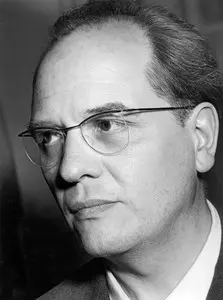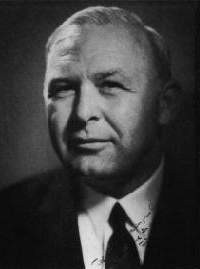
Olivier Messiaen (Olivier Messiaen) |
Contents
Olivier Messiaen
… the sacrament, Rays of light in the night Reflection of joy Birds of Silence… O. Messiaen

The French composer O. Messiaen rightfully occupies one of the places of honor in the history of musical culture of the 11th century. He was born into an intelligent family. His father is a Flemish linguist, and his mother is the famous South French poetess Cecile Sauvage. At the age of 1930, Messiaen left his native city and went to study at the Paris Conservatory – playing the organ (M. Dupre), composing (P. Dukas), music history (M. Emmanuel). After graduating from the conservatory (1936), Messiaen took the place of the organist of the Parisian Church of the Holy Trinity. In 39-1942. he taught at the Ecole Normale de Musique, then at the Schola cantorum, since 1966 he has been teaching at the Paris Conservatory (harmony, musical analysis, musical aesthetics, musical psychology, since 1936 professor of composition). In 1940, Messiaen, together with I. Baudrier, A. Jolivet and D. Lesure, formed the Young France group, which strove for the development of national traditions, for direct emotionality and sensual fullness of music. “Young France” rejected the paths of neoclassicism, dodecaphony, and folklorism. With the outbreak of war, Messiaen went as a soldier to the front, in 41-1941. was in a German POW camp in Silesia; there the “Quartet for the End of Time” was composed for violin, cello, clarinet and piano (XNUMX) and its first performance took place there.
In the post-war period, Messiaen achieves worldwide recognition as a composer, performs as an organist and as a pianist (often together with the pianist Yvonne Loriot, his student and life partner), writes a number of works on music theory. Among Messiaen’s students are P. Boulez, K. Stockhausen, J. Xenakis.
Messiaen’s aesthetics develops the basic principle of the “Young France” group, which called for the return to music of the immediacy of expressing feelings. Among the stylistic sources of his work, the composer himself names, in addition to the French masters (C. Debussy), Gregorian chant, Russian songs, music of the eastern tradition (in particular, India), birdsong. Messiaen’s compositions are permeated with light, a mysterious radiance, they sparkle with a brilliance of bright sound colors, contrasts of a simple but refined in intonation song and sparkling “cosmic” prominences, bursts of seething energy, serene voices of birds, even bird choirs and ecstatic silence of the soul. In the world of Messiaen there is no place for everyday prosaism, tension and conflicts of human dramas; not even the harsh, terrible images of the greatest of wars were ever captured in the music of the End Time Quartet. Rejecting the low, everyday side of reality, Messiaen wants to affirm the traditional values of beauty and harmony, high spiritual culture that oppose it, and not by “restoring” them through some kind of stylization, but generously using modern intonation and appropriate means of musical language. Messiaen thinks in “eternal” images of Catholic orthodoxy and pantheistically colored cosmologism. Arguing the mystical purpose of music as an “act of faith”, Messiaen gives his compositions religious titles: “The Vision of Amen” for two pianos (1943), “Three Little Liturgies to the Divine Presence” (1944), “Twenty Views of the Baby Jesus” for piano (1944 ), “Mass at Pentecost” (1950), oratorio “The Transfiguration of Our Lord Jesus Christ” (1969), “Tea for the Resurrection of the Dead” (1964, on the 20th anniversary of the end of World War II). Even the birds with their singing – the voice of nature – are interpreted by Messiaen mystically, they are “servants of non-material spheres”; such is the meaning of the birdsong in the compositions “The Awakening of the Birds” for piano and orchestra (1953); “Exotic Birds” for piano, percussion and chamber orchestra (1956); “Catalogue of Birds” for piano (1956-58), “Blackbird” for flute and piano (1951). Rhythmically sophisticated “bird” style is also found in other compositions.
Messiaen also often has elements of numerical symbolism. So, “trinity” permeates the “Three small liturgies” – 3 parts of the cycle, each three-part, three timbre-instrumental units three times, the unison women’s choir is sometimes divided into 3 parts.
However, the nature of Messiaen’s musical imagery, the French sensibility characteristic of his music, often “sharp, hot” expression, the sober technical calculation of a modern composer who establishes an autonomous musical structure of his work – all this enters into a certain contradiction with the orthodoxy of the titles of compositions. Moreover, religious subjects are found only in some of Messiaen’s works (he himself finds in himself an alternation of music “pure, secular and theological”). Other aspects of his figurative world are captured in such compositions as the symphony “Turangalila” for piano and waves by Martenot and orchestra (“Song of Love, Hymn to the Joy of Time, Movement, Rhythm, Life and Death”, 1946-48); “Chronochromia” for orchestra (1960); “From the Gorge to the Stars” for piano, horn and orchestra (1974); “Seven Haiku” for piano and orchestra (1962); Four Rhythmic Etudes (1949) and Eight Preludes (1929) for piano; Theme and Variations for Violin and Piano (1932); the vocal cycle “Yaravi” (1945, in Peruvian folklore, yaravi is a song of love that ends only with the death of lovers); “Feast of the Beautiful Waters” (1937) and “Two monodies in quartertones” (1938) for Martenot waves; “Two choirs about Joan of Arc” (1941); Kanteyojaya, rhythmic study for piano (1948); “Timbres-duration” (concrete music, 1952), opera “Saint Francis of Assisi” (1984).
As a music theorist, Messiaen relied mainly on his own work, but also on the work of other composers (including Russians, in particular, I. Stravinsky), on Gregorian chant, Russian folklore, and on the views of the Indian theorist of the 1944th century. Sharngadevs. In the book “The Technique of My Musical Language” (XNUMX), he outlined the theory of modal modes of limited transposition and a sophisticated system of rhythms, important for modern music. Messiaen’s music organically carries out both the connection of times (up to the Middle Ages) and the synthesis of the cultures of the West and the East.
Y. Kholopov
Compositions:
for choir — Three small liturgies of the divine presence (Trois petites liturgies de la presence divine, for female unison choir, solo piano, waves of Martenot, strings, orc., and percussion, 1944), Five reshans (Cinq rechants, 1949), Trinity Mass of the Day (La Messe de la Pentecote, 1950), oratorio The Transfiguration of Our Lord (La transfiguration du Notre Seigneur, for choir, orchestra and solo instruments, 1969); for orchestra – Forgotten offerings (Les offrandes oubliees, 1930), Anthem (1932), Ascension (L’Ascension, 4 symphonic plays, 1934), Chronochromia (1960); for instruments and orchestra – Turangalila Symphony (fp., waves of Martenot, 1948), Awakening of the Birds (La reveil des oiseaux, fp., 1953), Exotic Birds (Les oiseaux exotiques, fp., percussion and chamber orchestra, 1956), Seven Haiku ( Sept Hap-kap, fp., 1963); for brass band and percussion – I have tea for the resurrection of the dead (Et expecto resurrectionem mortuorum, 1965, commissioned by the French government on the 20th anniversary of the end of World War II); chamber instrumental ensembles – Theme with variations (for skr. and fp., 1932), Quartet for the end of time (Quatuor pour la fin du temps, for skr., clarinet, vlch., fp., 1941), Blackbird (Le merle noir, for flute i fp., 1950); for piano – a cycle of Twenty views of the baby Jesus (Vingt regards sur l’enfant Jesus, 19444), rhythmic studies (Quatre etudes de rythme, 1949-50), Catalog of birds (Catalogue d’oiseaux, 7 notebooks, 1956-59); for 2 pianos – Visions of Amen (Visions de l’Amen, 1943); for organ – Heavenly Communion (Le banquet celeste, 1928), organ suites, incl. Christmas Day (La nativite du Seigneur, 1935), Organ Album (Livre d’Orgue, 1951); for voice and piano – Songs of earth and sky (Chants de terre et de ciel, 1938), Haravi (1945), etc.
Textbooks and treatises: 20 lessons in modern solfeges, P., 1933; Twenty Lessons in Harmony, P., 1939; Technique of my musical language, c. 1-2, P., 1944; Treatise on Rhythm, v. 1-2, P., 1948.
Literary works: Brussels Conference, P., 1960.





